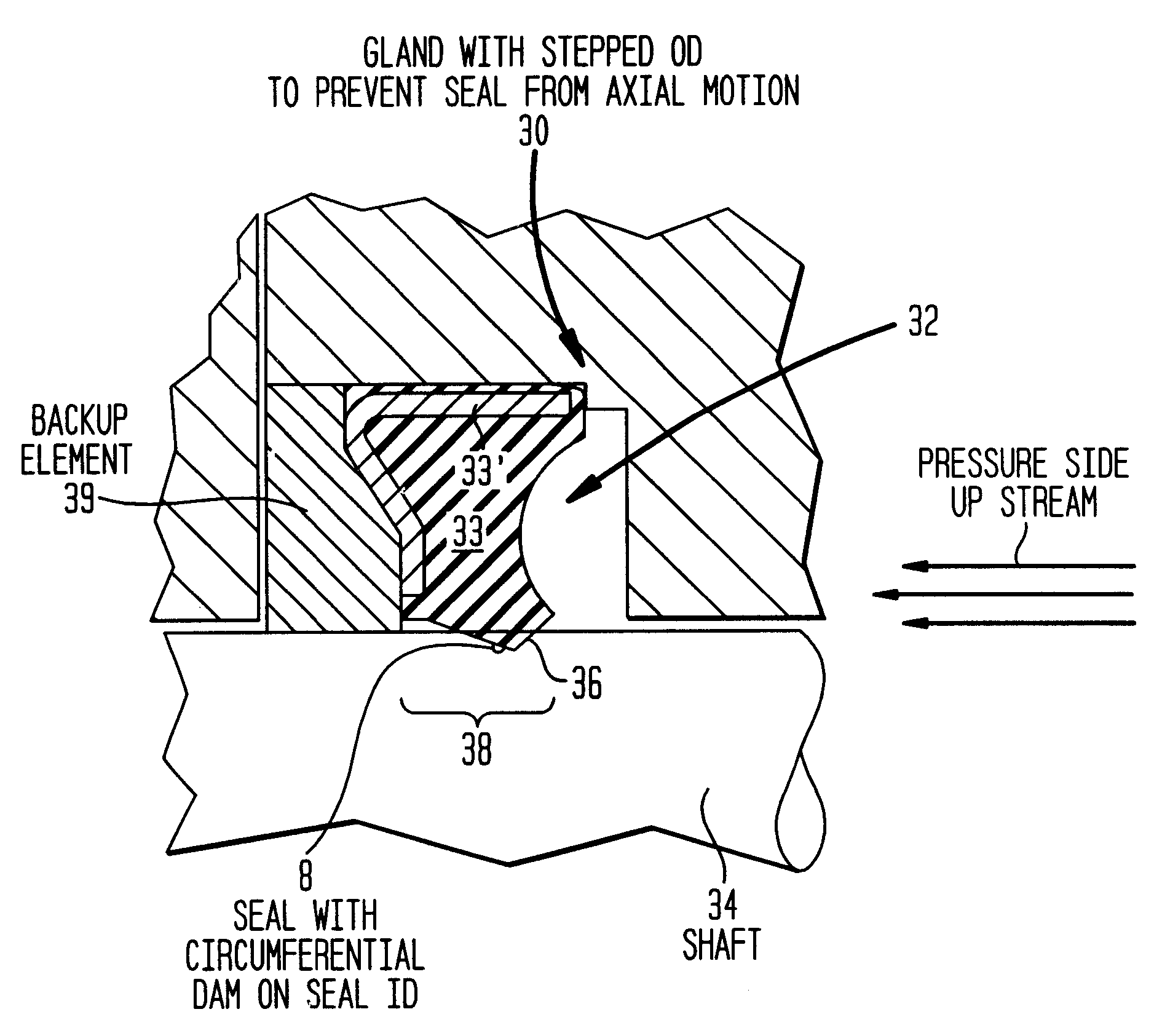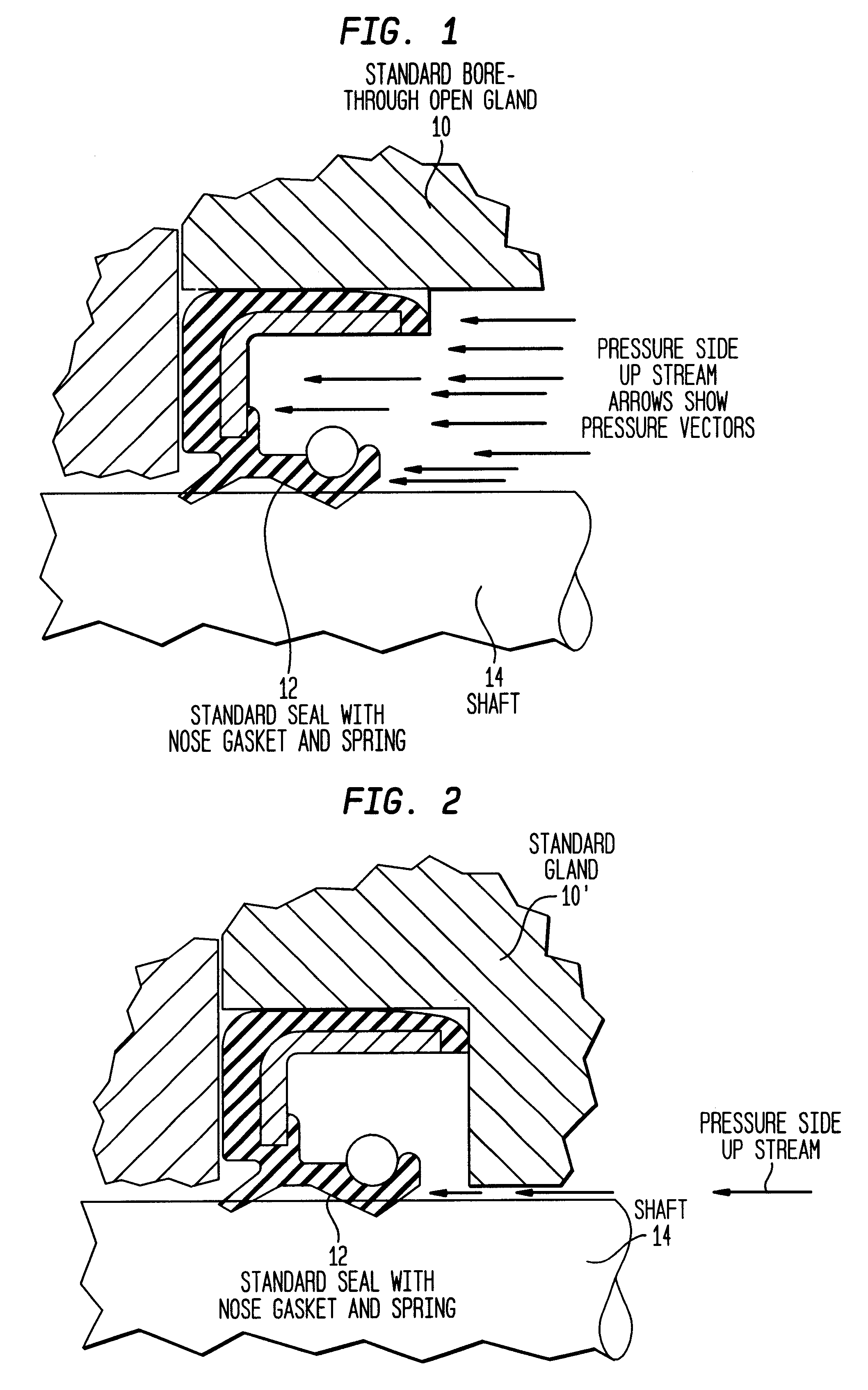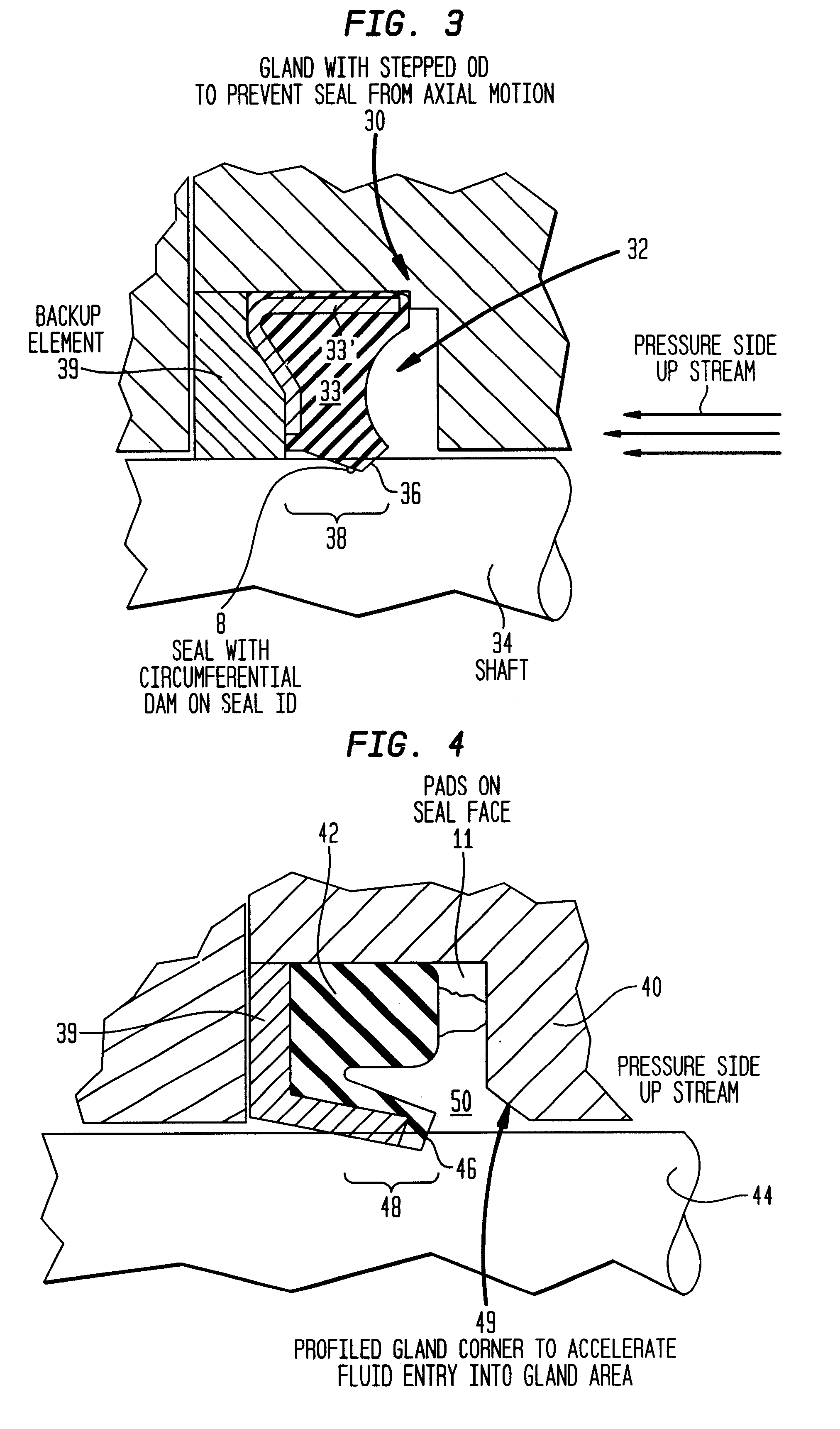Rotary shaft sealing system
a sealing system and rotary shaft technology, applied in the field of manufacture and method, can solve the problems of loss or distortion of the dimensional stability of the seal, the effect of elevated fluid pressure and/or pressure surge on the seal is not contemplated nor known, and the leakage of lubricant at the contact lip of the seal, so as to shorten the break-in period of a new seal, prevent displacement and/or distortion of the seal lip, and minimize fluid leakage
- Summary
- Abstract
- Description
- Claims
- Application Information
AI Technical Summary
Benefits of technology
Problems solved by technology
Method used
Image
Examples
Embodiment Construction
The system of this invention, for ease of explanation and understanding, is hereinafter described by means of explanation of the Figures which accompany this application and made part hereof. As above noted, each of FIGS. 1 & 2 illustrate a retention gland and seal geometry of two prior art configurations. Each of these configurations is deficient in one or more material respects where the seal is to be subjected to high fluid pressures or surges in fluid pressures. More specifically, FIG. 1 illustrates a combination of an open retention gland (10) and rotary seal (12) which are ineffective to resist lifting or displacement of the seal (12) from the rotary shaft (14) under hydraulic pressure (arrows indicate direction of fluid pressure) upon such seal. Similarly, FIG. 2 illustrates a combination of a closed retention gland (10') and seal geometry which is also ineffective to prevent the axial movement and lifting or displacement of the seal (12) from the rotary shaft (14) under pres...
PUM
 Login to View More
Login to View More Abstract
Description
Claims
Application Information
 Login to View More
Login to View More - R&D
- Intellectual Property
- Life Sciences
- Materials
- Tech Scout
- Unparalleled Data Quality
- Higher Quality Content
- 60% Fewer Hallucinations
Browse by: Latest US Patents, China's latest patents, Technical Efficacy Thesaurus, Application Domain, Technology Topic, Popular Technical Reports.
© 2025 PatSnap. All rights reserved.Legal|Privacy policy|Modern Slavery Act Transparency Statement|Sitemap|About US| Contact US: help@patsnap.com



